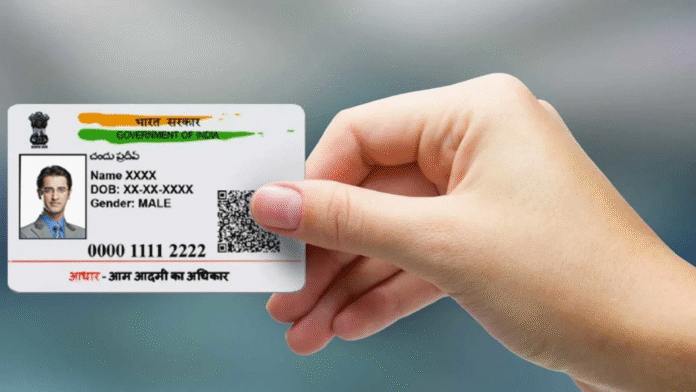Applying for a home loan is an important milestone in the journey of owning a house. To ensure a smooth and speedy process, submitting the required home loan documents without any errors or delays is crucial. While the documentation process might seem overwhelming at first, proper preparation and attention to detail can significantly ease the task. In this article, we will provide helpful tips for compiling, verifying, and submitting your documents correctly—and without unnecessary delays.
By taking proactive measures, you can present your application confidently and increase your chances of approval. Here’s a step-by-step guide on how to approach the documentation process for home loan documents effectively.
Key Documents Required for Home Loan Application
The specific requirements may differ slightly depending on the lender, but there are generally standardized groups of documents that you must submit:
- Personal Identity Proof
These documents establish your identity during the application process. Commonly accepted proofs include:
- PAN Card
- Aadhaar Card
- Passport
- Driving License
- Voter ID
- Address Proof
Lenders need to verify the applicant’s current residential address. You can submit:
- Utility bills (electricity or water)
- Rent agreement or residential lease agreement
- Aadhaar Card
- Passport with active address details
- Income Proof
Income proof is a critical component of your application, as it helps the lender evaluate your repayment capability. This includes:
- Salary slips (last 3–6 months for salaried individuals)
- Income tax returns (ITR) for self-employed applicants
- Bank account statements showing salary/income deposits
- Property Documents
When applying for a home loan to purchase a property, you’ll need to submit property-related documents such as:
- Sale agreement or proof of ownership
- Copy of property title deeds
- No Objection Certificate (NOC) from the builder or housing society
- Other Financial Documents
Some lenders may require additional financial documents to assess your eligibility:
- Form 16 (for salaried applicants)
- Financial statements for business owners
- Loan account statements (if you have any ongoing loans)
Understanding the list of required home loan documents is the first step toward ensuring an error-free submission process.
Key Tips for Submitting Home Loan Documents Without Errors
Errors in your loan documentation can lead to delays or even rejection of your application. Here are some tips to minimize mistakes and avoid unnecessary complications:
1. Start Early and Make a Checklist
Once you decide to apply for a home loan, start compiling your documents as early as possible. Create a checklist of the required documents to ensure you don’t miss anything. List down all proofs—identity, income, address, and property-related paperwork—and include photocopies or printouts as needed.
Place originals and copies in separate folders to avoid confusion during submission.
2. Understand the Requirements Clearly
Good preparation begins with understanding the documentation requirements. Seek clarification about all mandatory documents before you start collecting them. If you’re unsure about the process—such as how to get income certificate or what counts as valid address proof—confirm these details with your loan officer or an expert source.
3. Ensure Accuracy of the Information
Double-check every detail on the documents before submission. Incorrect spellings, outdated information, or inconsistent addresses and names can cause issues with your application. For example, if your Aadhaar Card and voter ID show different addresses, update them to reflect a single correct address.
Similarly, ensure that income-related documents (like salary slips and bank statements) are dated correctly and match the declared salary in your application.
4. Avoid Missing Documents
Missing even one required document can cause delays. For example, when income certificates are required to assess your loan eligibility, ensure that you know how to get income certificate from the relevant authorities and prepare it well in advance. Missing property-related paperwork, such as the title deed or NOC, can significantly hamper the processing of property loans.
A checklist mentioned earlier will help you avoid missing deadlines or losing track of specific submissions.
5. Seek Expert Guidance Where Needed
Sometimes, documents such as property deeds or tax return filings can be complicated, especially for first-time applicants. In such cases, seek professional advice from a legal expert, accountant, or property consultant. They can help you verify the accuracy of the paperwork and ensure that any necessary corrections are made without delay.
6. Use Digitized Records When Possible
Many banks have now started accepting digitized versions of documents. Uploading digitized copies in secure portals not only reduces paperwork but also ensures faster processing. If your proof of income, property title deeds, ITRs, or bank statements are available digitally, use these to expedite the submission process.
7. Verify Property Documents Thoroughly
Property documentation is vital for home loans, as it involves significant scrutiny by lenders. Ensure that all your property documents are genuine, updated, and properly endorsed by the seller’s legal representatives. If required, get legal advice to understand complex property jargon and confirm the authenticity of paperwork like sale deeds and NOCs.
8. Update Your KYC Details
Issues with identity and address proofs often arise due to outdated KYC records. Before submitting your home loan documents, ensure that all KYC records with your bank or other service providers are accurate and match the data in your loan application. This reduces discrepancies during verification.
9. Remain Organized and Proactive
Throughout the process of document submission, remain organized and proactive. Follow up regularly to ensure that there are no communication gaps or requirements pending from your side. Respond promptly to requests for additional paperwork or clarification.
If the lender raises concerns about a particular document—say, clarification about how to get income certificate or rectification in ownership paperwork—address the issue immediately to avoid stalling your application.
Avoiding Delays in the Documentation Process
Delays in submitting home loan documents can result from poor preparation, lack of awareness, or neglecting minor details. To avoid delays:
- Apply for certificates promptly: If your application requires documents that take time to process (e.g., income certificates or property NOC), apply for them early to avoid last-minute rushes.
- Follow up regularly: Once you’ve submitted your documents, stay in touch with the bank officers to complete formalities and avoid long waiting periods.
- Stay proactive with corrections: Address any discrepancies or missing documents immediately.
Final Thoughts
Organizing and submitting home loan documents is undoubtedly one of the most crucial steps in securing a loan. By starting early, verifying every detail, and remaining proactive throughout the process, you can ensure that your loan application moves forward without unnecessary hassles.
Whether it’s ensuring valid income proof or understanding how to get income certificate in advance, prior planning will simplify your documentation process and minimize errors or delays. With thorough preparation, you can confidently present your application, paving the way for faster approval and the realization of your dream home!








